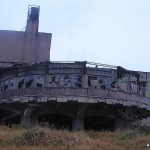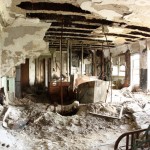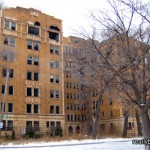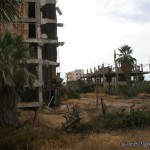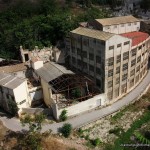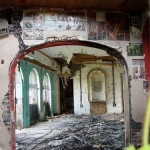‘Souls is set thirty years (and counting!) after the demise of humans. The 1988 virus that destroyed them was a fast-acting pandemic and decimated most human populations within weeks. This sudden death of the planet’s dominant species had profound effects on the planet, its environments, and its other species.
Earth’s Recovery
At first, lack of maintenance actually created many disastrous situations. Left unattended, chemical plants and factories hit critical points — some outright exploded, spewing toxic fumes and substances. Others expelled pollution and sewage into rivers and lakes. And, of course, humans falling over dead everywhere created noxious environments full of rotting corpses.
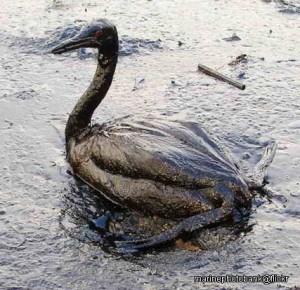
Eventually, however, cleansing began in many areas. Without humans to operate cars, homes, factories, plants, and machinery, few new toxins were created or released. Rain washed away toxic particles from the planet’s surface and carried it further into the ground. Plants and trees began removing the excess carbon dioxide from the atmosphere. Rivers flowed clear as the factories exhausted their supply of sewage and other wastes. Bodies decomposed entirely, leaving new growth in their wake.
Of course, not all has reverted to untouched, pre-human wilderness — there are still many lingering effects of humanity’s toxicity. Oil spills occurred where tanker ships ran aground. Here and there, factories storing large amounts of noxious chemicals and waste decayed to the point of leaking new pollutants. These areas are, in some cases, immediately deadly to entering wildlife — but in other cases, their effects manifest later in the form of diseases and birth defects.
Lasting Damage
Things created and used by humans — machines, structures, tools, and goods — are damaged after decades of exposure.

- Natural Disasters
Natural disasters such as earthquakes, hurricanes, tornadoes, fires, and floods can devastate large regions, inflicting significant damage to even very large buildings. Without humans to rebuild, areas that have been affected with extreme disaster are left unrecognizable, vulnerable to nature’s inevitable takeover. - Water and Flood
Many areas are more prone to flooding without human control of dams and dykes. Rain and moisture destroy many things outright (e.g. paper and fabric goods); wooden and concrete structures steadily weakened over time. - Sun and Heat
Sunlight washes out the color on many items — toys, paintings, buildings, statutes, etc. Heat can also cause degradation in quality and warping in items, especially plastics. Heat can preserve, if it is very dry (e.g., desert heat) but humid, moist heat is extremely damaging. - Fire
Electrical fires were common during the pandemic as appliances and other tools were left suddenly unattended. In the years after humanity, many areas are damaged by rampant fires sparked by chemical explosions, lightning strikes, and similar.
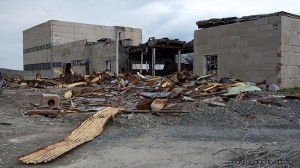
- Cold
In extremely cold parts of the world, general degradation is faster. Freezing and ice are damaging to most structures humanity built; in some of the coldest parts of the world, even brick and stone can decay rapidly. - Weather
Storms, wind, and weather-related disasters damage structures, sometimes to the point of complete collapse. Eventually, almost all windows are shattered, and roofs are sagging or even collapsing. Debris carried on high winds pull down many telephone wires and even their poles. - Chemical
Metal in cars rust and disintegrate. Many everyday human-made chemicals, such as cleaning agents, decay to the point of uselessness. - Vegetation
Moss, plants, and even trees have taken over roads, sidewalks, and structures. Vegetation carpets the highways, and rural, overgrown roads have ceased to exist entirely. Suburban areas are being reclaimed slowly but steadily by nature — while some sturdy structures remain, it is not uncommon to see ten or fifteen- year old trees sprouting from the tumbledown wooden ruins of a human home. - Animal
Insects, rodents, and other pests chew through wooden structures and destroy various goods. Stored food supplies are emptied by scavengers, even those which were vacuum-packed or air-sealed. Where it hasn’t been pilfered or exposed to the air, most other food has spoiled well beyond use.
Buildings and Structures
Many buildings in the ‘Soulsverse are uninhabitable and/or dangerous, as they have fallen into disrepair and decay.
Urban and industrial areas typically have more usable structures. In addition to a higher density of buildings, taller buildings will have protected shorter ones from weather and disaster damage. Stores, schools, warehouses, hospitals, and similar buildings are the most likely to have survived. However, even the most survived building requires some form of restoration prior to being acceptable housing. Take care, too, that taller buildings’ lightning rods have eroded by now, and a strike from lightning could set the entire building on fire.
In suburban areas, most houses are not built to withstand decades of destruction without maintenance. Most are half-standing or falling down from rot and do not provide significant insulation or isolation from the outside. Termites infest wooden structures and water damage, rust, and other factors lead to quick decay. Few things found in the outer portions of homes are usable — if anything is to be salvaged, it is deeper in the building, away from the open windows (or open walls, in the case of collapsed buildings).
Items and Goods
A majority of casual and everyday items will have been destroyed by now and CANNOT be found in usable condition:
- Books and paper goods have been damaged by flooding, moisture, vegetation growth, mold, rot, etc.
- Fabrics and clothing will have mold, and leather goods have rotted or been eaten.
- Electronics are completely unusable as all wires and small parts will have been damaged, batteries will have leaked, and other power sources are unavailable.
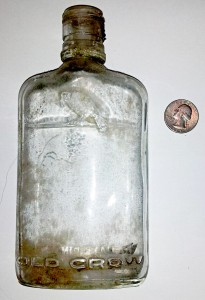
Some sturdier items might have survived in better condition, given certain circumstances:
- All but the thickest glassware will have broken — only fragments will remain of most windows, drinking glasses, trinkets, and anything else made of glass. The fragments may still be useful for glassworking for canines advanced enough, but are otherwise generally useless.
- Water damage, sun damage, and heat damage has warped most plastics out of shape.
- Anything made of iron will have rusted, some to the point of disintegration.
Nevertheless, it is not impossible to find usable or even items in good condition. Safes and time capsules that have only begun to deteriorate may have preserved various keepsakes and jewelry. Items kept in sealed glass jars or other containers may also have avoided heavy damage. Wines, other alcohols, preservatives, and rations meant to last a long time may still be safe to consume. The higher parts of buildings tall enough to avoid flooding but low enough to avoid lightning strikes may have saved some items from related damages.
Conversely, however — many human habitats will also have been picked through by dozens of animals over the years, Luperci or otherwise. Looting of usable goods is common, and areas with large Luperci populations will have been picked completely clean!
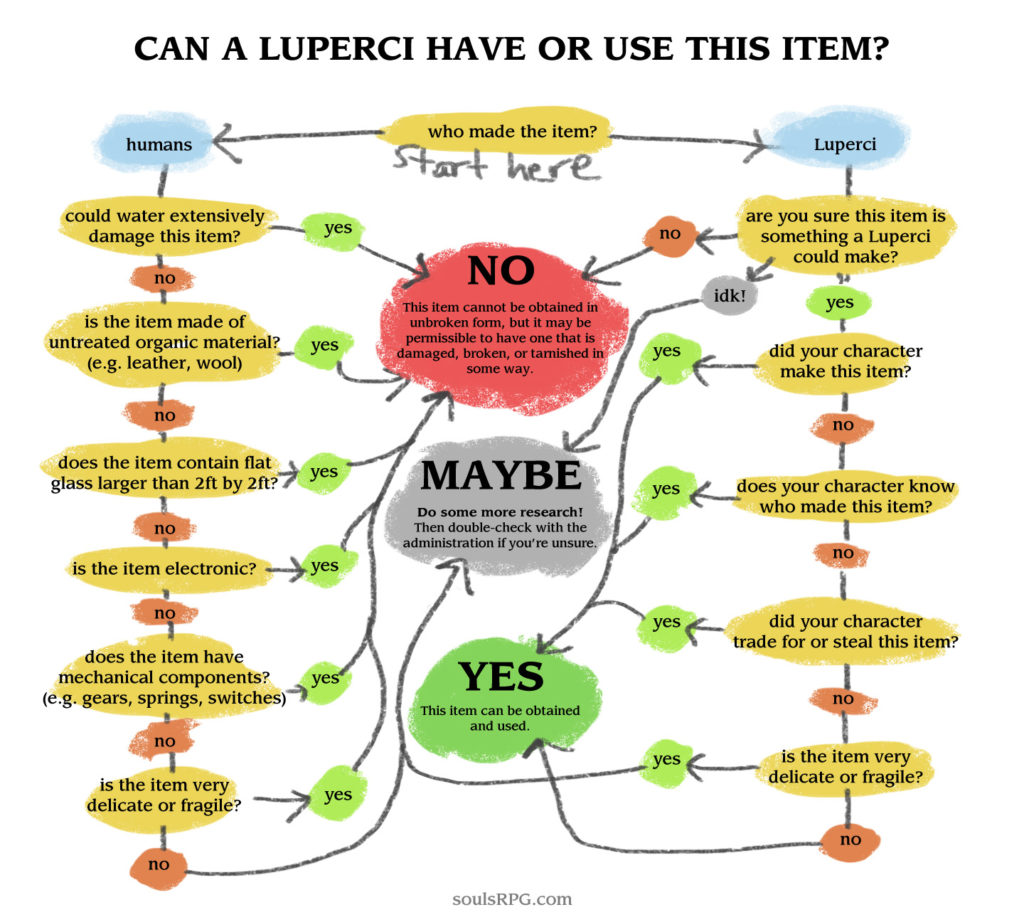
Animal Species
Native species experienced huge population booms, overtaking previously human-occupied areas. Urban and suburban areas became overrun with squirrels, raccoons, deer, pigeons, and other prey species, and in turn, predator populations surged as bears, cougars, wolves, etc, expanded their territories to follow their plentiful prey.
Without human predator control, most populations of domesticated farm animals such as dairy cows, chickens, and sheep were eradicated. However, survivors interbred to create sturdier stock, and scattered landrace populations (see the Dogs Guide for an explanation of landraces) of cattle, goats, pigs, and other formerly domesticated species exist.
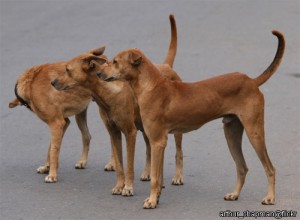
Without electric fences, animals in zoos escaped. Species with special needs, including most exotics, died without human care. In rare instances, tiny or hybridized populations of some hardy species may have survived.
Real Life Examples
The following cities were left abandoned in real life. Their environments provide a useful parallel to the level of degradation one might expect in post-apocalyptic eastern Canada:
Post-1988 Human Contributions
Anything built, created, or invented after 1988 does not exist in the ‘Soulsverse. For example, the Confederation Bridge linking Nova Scotia to Prince Edward Island does not exist in ‘Souls.
